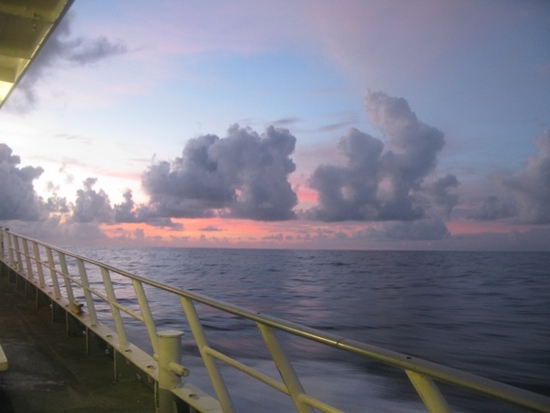
Many environmentally related posts appearing at Daily Kos each week don’t attract the attention they deserve. To help get more eyeballs, Spotlight on Green News & Views (previously known as the Green Diary Rescue) appears twice a week, on Wednesdays and Saturdays. The most recent Saturday Spotlight can be seen here. So far, more than 19,760 environmentally oriented diaries have been rescued for inclusion in this weekly collection since 2006. Inclusion of a diary in the Spotlight does not necessarily indicate my agreement with or endorsement of it.

Adrift in Oil Country—by Laura Gottesdiener via TomDispatch: “I hadn’t driven nearly 2,000 miles from Brooklyn to work as a cocktail waitress in a strip club. (That only happened after I ran out of money.) I had set off with the intention of reporting on the domestic oil boom that was reshaping North Dakota’s prairie towns as well as the balance of both global power and the earth’s atmosphere. This spring, production in North Dakota surged past one million barrels of oil a day. The source of this liquid gold, as it is locally known, is the Bakken Shale: a layered, energy-rich rock formation that stretches across western North Dakota, the corner of Montana, and into Canada. It had been considered inaccessible until breakthroughs in drilling and hydraulic fracturing made the extraction of oil from it economically feasible. In 2008, the United States Geological Survey (USGS) announced that the Bakken Shale contained 25 times more recoverable oil than previously thought, sparking the biggest oil rush in state history. Now, six years later, the region displays all the classic contemporary markers of hell: toxic flames that burn around the clock; ink-black smoke billowing from 18-wheelers; intermittent explosions caused by lightning striking the super-conductive wastewater tanks that hydraulic fracturing makes a necessity; a massive Walmart; an abundance of meth, crack, and liquor; freezing winters; rents higher than Manhattan; and far, far too many men. To oil companies, however, the field is hallowed ground, one of the few in history to break the million-barrel-a-day benchmark, earning it ‘a place in the small pantheon of truly elite oil fields,’ as one Reuters market analyst wrote.”
If seeing is believing, then not seeing makes it easy not to believe.—by pakalolo: “Most of the Greenhouse gases rapidly accelerating global warming are invisible. The sun’s rays enter the earth and are absorbed by the oceans, the earths land masses and by plants. This process allows life to flourish on our planet. Some of the suns energy is reflected back into space particularly by polar regions and other snow covered areas. However, as in the case of a Greenhouse, moisture and heat is captured and contained by the glass panes allowing warm loving plants to survive even in winter. For the planet, carbon dioxide, methane, and other gases prevent the escape of energy back into space. The gases that cause the Greenhouse gas are mostly invisible. It’s not that these gases are bad, as life as we know it would not be possible without them. But to much of a good thing can cause great harm to life on the planet. In the video above, the Oceanic Preservation Society, has promoted a video that uses a FLIR (Forward Looking Infrared) that makes the invisible visible. The short clip is part of a new film being released in 2015 called Racing Extinction.”
Hottest August On Record, Followed By Hottest September.—by pollwatcher: “A new NASA report is showing that September was the hottest on record. Global average surface temperatures last month made September 2014 the warmest in the records maintained by US space agency NASA. NASA reported a temperature anomaly – or variance to the long term 1951-1980 average – of 0.77C for September 2014. This is the second record-breaking month in a row following the warmest August on NASA’s records. […] As our species continues its crazy experiment with changing the atmosphere and oceans our very lives depend on, we are continuously surprised at what is happening. So now it seems that surface temperatures are warming faster than the entire atmosphere, and it may be linked to a change of winds over the oceans. Planet earth is a fascinating and very interesting place. We are far from understanding the consequences of rapidly changing the oceans and atmosphere but we and our children are about to find out, whether we like it or not.”
You can find more rescued green diaries below the sustainable squiggle.